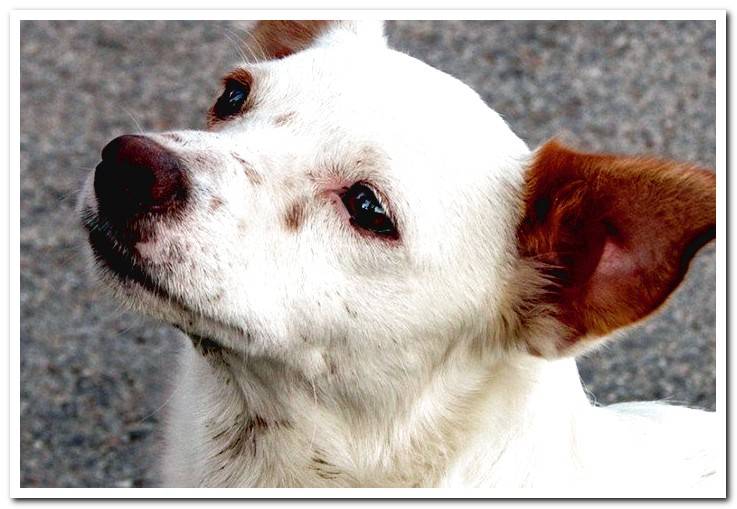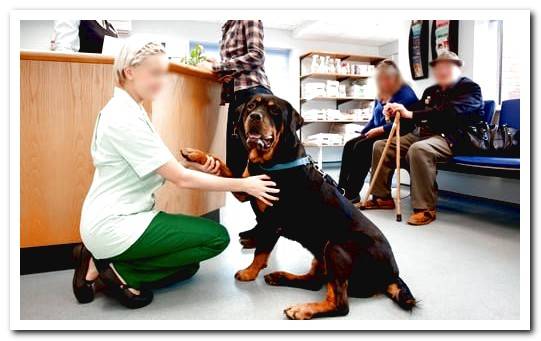
Abscesses are accumulations of pus that can appear in different places on the body of our dog. In some cases we can see them as packages of different sizes.
The presence of pus warns us of the existence of an infection that, as such, will require veterinary treatment, which may even include surgery. Let’s see in detail how we should act in the presence of an abscess.
Index of contents
- 1 How does an abscess originate in a dog?
- 2 Types of abscesses in dogs and symptoms
- 2.1 Skin abscesses
- 2.2 Root abscesses
- 2.3 Abscesses in the head and neck
- 2.4 Anal gland abscess
- 3 What is the danger of abscesses in dogs?
- 4 Abscess treatment
How does an abscess originate in a dog?
A foreign body, a bite, parasites or even injuries that the dog can do by nibbling on the skin for some irritating condition, can be the beginning of an abscess. These are accumulations of pus in cavities under the skin. They are covered by a kind of capsule that keeps the pus located there.
They are generally due to a bacterial infection that the organism manages to isolate and thus prevent it from spreading. There are superficial ones, which can open on their own, or deeper ones, which are those that sometimes become encystic and can form fistulas.

Types of abscesses in dogs and symptoms
In dogs we can find different types of abscesses depending on their location. Although we will see in detail the most common in the following sections, these would be the symptoms that should make us suspect the presence of an abscess:
- Appearance of a larger or smaller lump under the skin.
- Painful lump.
- The skin on the lump may feel warm and red.
- A very large abscess is felt as if there is fluid inside it.
- Fever.
- Anorexy.
- Depression.
- Suppuration in the mouth and inflammation in the face.
- Abnormal positions of the head.
- Eye discharge
- Protrusion of the eye.
- Inflammation around the anus.
Skin abscesses
Skin abscesses are the most common that we will find in our dogs. They occur when a wound that is falsely closed is made, for example in a fight or with a foreign body.
From the outside it seems that the wound is healed but inside an infection has started. The subcutaneous cluster of pus is the lump that we will see on the outside. Pimples, pustules, or boils are small types of skin abscess.
We must go to the vet because the pus must be removed by emptying the abscess and with antibiotics. This type of abscess is most often seen around the tail, neck, or cross area.
Root abscesses
Root abscesses are those that occur in the teeth. They are more frequent in canines and upper premolars. In the latter case it is when the face is inflamed, specifically the area under the eye.
If the abscess opens we will see the pus falling down that side. When the infection is localized to a tooth, the abscess may open in the lower jaw. A complication of these abscesses is the oronasal fistula.
It occurs when the abscess bursts in the nasal cavity, causing the tooth to fall out. The gap allows the mouth to communicate with the nose. The dog will have a runny nose and sneeze, especially after eating. It is treated with surgery.
Abscesses in the head and neck
Its origin is the same as that of any other subcutaneous abscess but, unlike these, they usually cause fever and make the dog tilt my head or that he can’t open his mouth because of the pain. This prevents them from eating and drinking.
We can find retrobulbar abscesses, which are those that appear behind the eyeballs and can even protrude them. Abscesses in the frontal sinuses look like inflammation under the eye. There are also submandibular abscesses, which start in the floor of the mouth and affect the lower jaw.
Anal gland abscess
This type of abscess will cause inflammation around the anus, usually only on one side. The skin looks red and evolves to a purple hue. The complication that can arise is that they open inward and cause a fistula.

What is the danger of abscesses in dogs?
Although a small skin abscess is usually easily resolved without any repercussion for the animal’s health, the abscesses that we find in the head or neck are veterinary emergencies They can cause significant damage and even lead to encephalitis.
Those that appear in the anal glands, due to the risk of fistula formation, also require prompt veterinary assistance. The fistulas in this area will need surgery and it is not easy to heal them, hence the need to intervene early.
Abscess treatment
In skin abscesses, it is common for the vet to start by trimming the hair in the adjacent area. It will disinfect it and, if it finds a foreign body, it will remove it. Some abscesses can open only by applying heat. Other cases require drainage from a veterinaryn. This allows the wound to close from the inside out.
For this, an incision is made through which the pus will come out. You can also leave a tube where it will come out. At home we will have to disinfect the area and, in general, administer the antibiotic that the vet prescribes. When the abscess is in a tooth, it is usually extracted and cleaned in the mouth.
Any of the treatments should always be applied by a veterinaryn. Under no circumstances should we apply treatment on our own.
